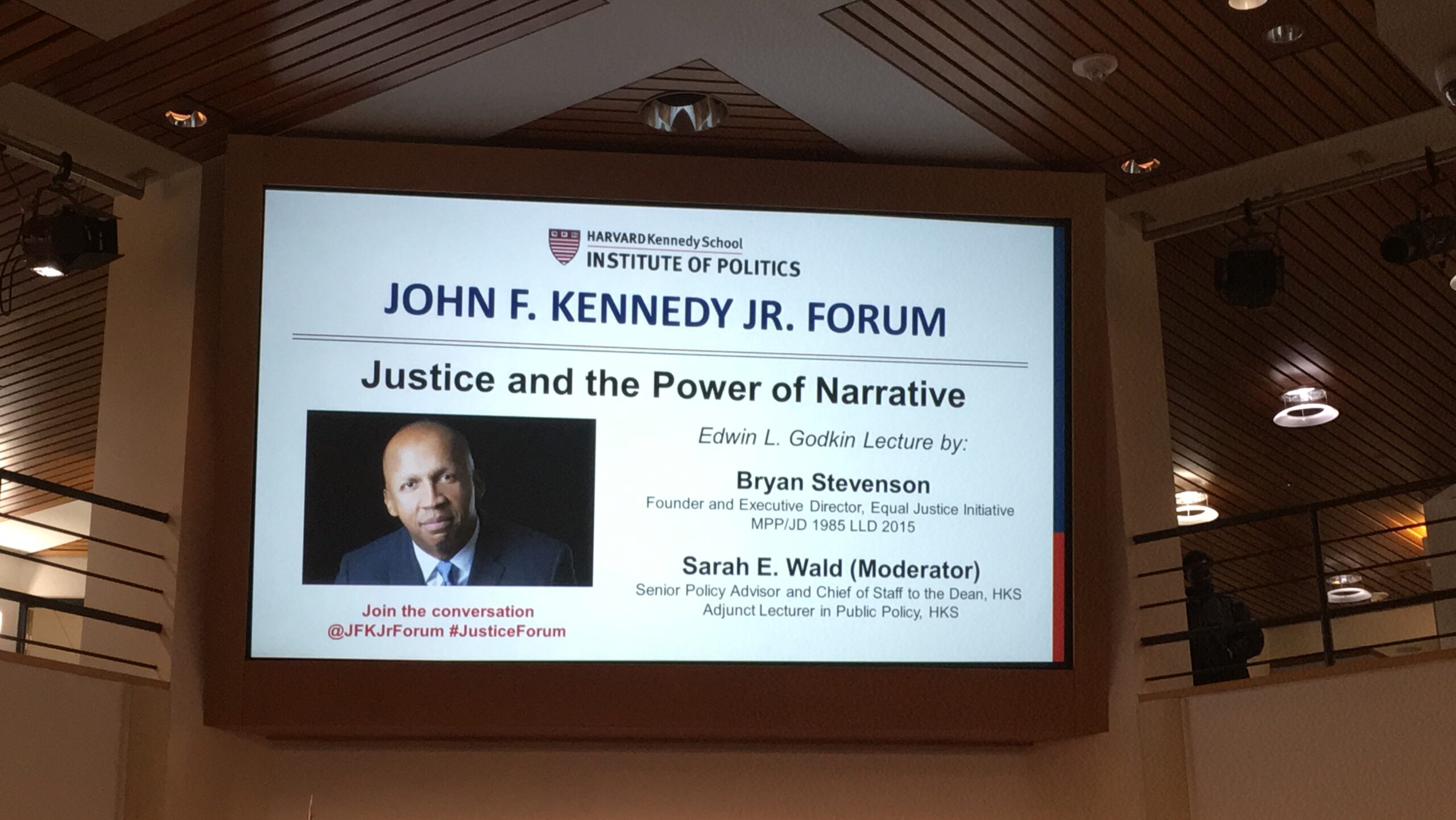Bryan Stevenson speaks about the power of hope in the face of hopelessness
“The United States has the highest rate of incarceration in the world. From 300,000 in 1972, it has crossed 2.3 million citizens today,” said Harvard alumnus Bryan Stevenson at the Edwin L. Godkin Lecture on Tuesday, December 4. “The number of women and children being sent to prisons has increased by 646%. One in every three black men one in six Latino men are likely to be in prison during their lifetime.”
His call for change was welcomed with a thunderous appease by the crowd.
Bryan Stevenson is the founder of the Equal Justice Initiative. During the lecture, he spoke about his work defending people wrongfully convicted of crimes and overturning such convictions, his work at the Legacy Museum, and the power of narratives to a packed audience consisting of newly appointed Congresswomen and men, students, faculty and the press. The Legacy museum which is a national memorial of peace and justice has been visited by over 300,000 people in the last six months alone. “We need to recognize history. We have got too celebratory in this country. That’s not our history,” he said.
Bryan speech centered around the four principles of creating change – Proximity, changing narratives of fear and anger, hope, and getting comfortable with discomfort.
“Solutions come in proximity,” he said.
He shared his own story of segregation and the generations before him who struggled to get an education. He spoke of his days wandering around HKS and HLS, and discovering his purpose by being proximate to a person on death row, whom he represented as a lawyer.
The second principle is to work on changing narratives of fear and anger.
To illustrate, he talked about the laws that treat drug addiction as criminal issues as opposed to a healthcare problem. Such narratives lead to classifying children caught with possession of drugs as “super-predators” without being sympathetic to the socio-economic conditions in which they grew up. There are twenty-eight states in the U.S. where children are being housed in adult jails.
He addressed the black and brown students in the crowd saying, “It doesn’t matter you get a Harvard degree, doesn’t matter how kind and smart you are, doesn’t matter how hardworking you are, doesn’t matter how law-abiding you are, you are going to perceived dangerous and guilty just because of your color.”
“Hopelessness is the enemy of justice,” he elaborated the third principle.
In times of such hopelessness, he asked the audience to protect their hope dynamic. Referring to a case where an intellectually challenged person was executed by the state, and he failed to have the execution lifted, he talked how he regained his sense of purpose during such difficult times. “I represent the broken, I work in a broken system,” he said. “I do what I do because I’m broken too. I am not just fighting for my clients, but I’m fighting for myself.”
He ended his speech by asking people to do things that are uncomfortable and inconvenient.
Bryan left a deep imprint on the hearts and minds of the audience who gave him a standing ovation as he ended his speech.
The Legacy museum which is a national memorial of peace and justice has been visited by over 300,000 people in the last six months alone.
“I was at the Legacy Museum last Thanksgiving and we asked an elderly white lady behind us what brought her there,” said Joao Abreu, an MPA/ID student at the Kennedy School. “She mentioned how she was from a part of the country with lesser racial diversity. She cried acknowledging the terrible things that have been done in this country in name of race.”
“I’ve been a fan of Bryan Stevenson for years,” said Tiffany Thompson, an MPA student at HKS. “However, the one part that was new and heart-wrenching was his comment on being broken. I know firsthand how social justice work can leave you broken but hopeful. I struggle with saying I’m broken and so are the people I fight for. Isn’t this a form of damage imagery?”
His talk made international students ponder over their own historical baggage. “Brazil received 10 times more slaves from Africa than did the US. It was the last country in the Americas to abolish slavery. Brazil doesn’t have its National Memorial for Peace and Justice. But as the US has shown us, it should,” said Joao.
Yes, it should. As should every other country in the world as we continue our journey towards justice with hope and inspiration.
